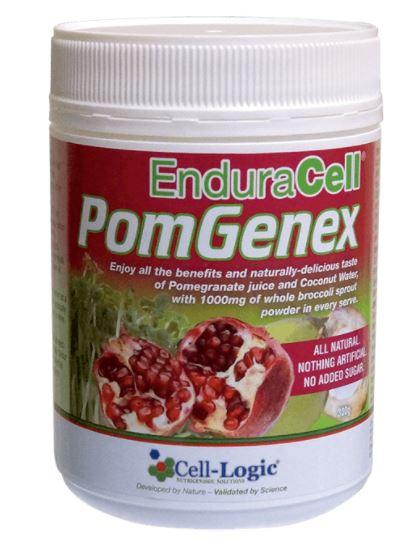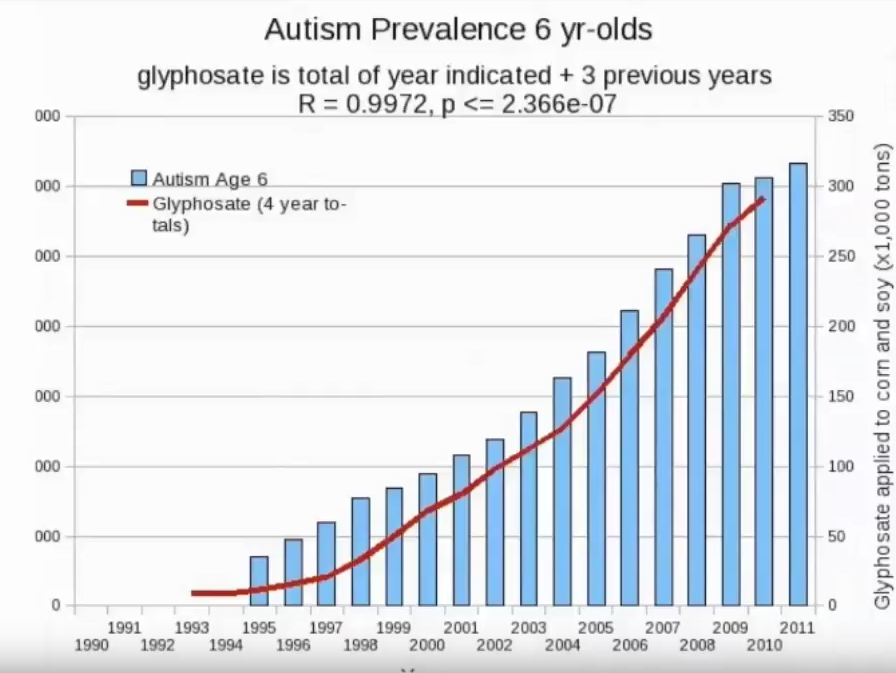Breakfast of Champions: What To Eat in the Morning
Article At A Glance:
• Breakfast is crucial for everyone, but it is especially important for children with autism who have compromised immune systems.
• Typical and even seemingly healthy breakfast foods can cause inflammation, blood sugar spikes, and energy slumps.
• Foods high in protein and good fats help kids feel full, have energy, and heal their gut.
We’ve heard it said that breakfast is the most important meal, as it is meant to fuel us and create a productive start to our day. So what should breakfast look like for a child who has autism? If we understand that the key to helping these kids lies in healing the gut (feeding good bacteria while starving the bad), what types of food should they be consuming?
First, let’s begin by analyzing typical American breakfast foods. These can include orange juice, toast, cereal, and milk. The truth is that these combination of foods are often packed with sugar (orange juice and cereal in particular) that spike blood glucose levels, cause inflammation, and then lead to an energy crash a few hours later.
Sometime later, the American breakfast began to evolve into something seemingly healthier with foods like whole-grain bagels, oatmeal, a bowl of fruit, and skim milk. While these foods are marketed to appear more nutritious, unfortunately they cause many of the same issues as the typical diet.
The R2 Diet
So what’s a better way to fuel our kids’ bodies? I developed the R2 diet, which includes foods like eggs, avocado, uncured pastured bacon, and R2 pancakes (the recipe is available in the members’ section). These foods feed the brain, keep us full longer, and feed the good gut bacteria.
Making important changes like these in your family’s diet can make a significant difference in your child’s behavior.
*This website is provided for informational purposes only and is not intended as a substitute for the advice provided by a healthcare professional.
References
Web MD-Breakfast: Is It The Most Important Meal?
Beware of the FrankenChip

New Research Shows The Power of Broccoli
Broccoli seems to be one of those foods kids love to hate. And while the texture and (lack of) taste can be challenging, there are ways to make it fun and appealing for children, as this is a food that is particularly important for them.

There is emerging research that broccoli can be used to treat autism. Findings show that increased consumption of Sulforaphane (the active enzyme in broccoli sprouts) can lead to improved social behavior and better verbal communication among males ages 13-27 over 18 weeks. As social behavior and communication are among the most distressing concerns of families with autism, this is exciting news!
We are pleased to carry a supplement that contains Sulforaphane (and thus offers these same benefits) but helps tremendously with the taste for picky eaters. EnduraCell PomGenex has no added sugar and also combines the power of superfoods coconut water and pomegranate to help nourish your kids in a way that will aid in improved behavior and gut healing from the inside out.
Using EnduraCell PomGenex

In order to get my son to eat it, I mix the product into a berry smoothie and refer to it as a dessert. You can use almond milk, clean berries (always use organic to avoid toxic pesticides), and even some Stevia for flavor if you have a little sweet-tooth in your home. Whatever fruits your child naturally likes are best to try. The result is a delicious smoothie that tastes like a milkshake (and nothing like broccoli); what child can resist?
It may take a little bit of experimentation to find the right recipe to make that perfect concoction for your child. Read here for more general tips on using our supplement products.
Click here to learn more about EnduraCell PomGenex or to purchase it.
*This website is provided for informational purposes only and is not intended as a substitute for the advice provided by a healthcare professional.
References
How to Read Nutrition Labels
Article At A Glance:
• Food companies often use deceptive marketing to sell their products.
• To be an informed consumer, you need to learn to read and understand the billboard, nutrition facts, and ingredient list on each product label.
If we truly understand that the key to treating our children’s autism lies in a healthy gut, we will take great care to ensure that their bodies are being properly fueled by excellent nutrition. Shopping for healthy food should become a top priority, but how can we ensure we make the best purchases?
First, it’s crucial to understand that modern packaging is a marketing masterpiece. Major food manufacturing companies have paid top dollar to determine what words, colors, fonts, and pictures on the packaging best convince people to buy their products. In order to not be fooled into making seemingly good selections that actually can harm our children’s already compromised immune systems, you must become adept at reading and deciphering their labels. Here are the 3 parts of the label you need to understand:
The Billboard
The front of the label, or “the billboard”, if you will, is your first impression of the product. Certain words like “low fat,” “healthy eating,” clue you in that this is meant to be some sort of healthier option, and many people will simply take this at face value and put the item in their cart upon seeing it. However, you need to look further to know whether or not this is a food you really should buy.
Nutrition Facts
Those who are even mildly health-conscious are likely familiar with reading the nutrition facts. Information such as calories per serving, number of servings, grams of sugar, grams of fat, etc. all play a part in determining if this is a good purchase. Be aware that many products that label themselves as “low fat” are marked high in sugar and should be avoided. Also, if a food only has 70 calories per serving but the package contains many servings, the food is not as low calorie as it may appear to be.
The Ingredient List
The list of ingredients is arguably the most important part of the label but sadly is often the most neglected part. Look for ingredients that you can pronounce, and stay away from things like corn syrup, preservatives, and food dyes.
In the video above, I take you through an exercise looking at two bags of chips and how they differ in the information offered on their labels. Watch it to learn how even though one is clearly being marketed as the healthier choice, the ingredient list tips it off as the worse of the two.
*This website is provided for informational purposes only and is not intended as a substitute for the advice provided by a healthcare professional.
References
My Story: How It All Began
Article At A Glance:
I share my story about my family’s experience and how we found relief.
Many parents I encounter ask me how I began my journey as an advocate for families dealing with autism, so I thought I’d briefly share my experience.
I’m a single dad of a 7-year-old boy, and shortly before his 3rd birthday, my son was diagnosed with autism. The pediatrician told me there was nothing we could do and then handed him a piece of candy. I was devastated.
To say it was a difficult time would be an understatement: I was confused about what to do next, and I felt like all my dreams of raising my son were beginning to shatter. What would our family look like? Could he ever be happy and successful, or were things always going to be a struggle?
Although I initially felt helpless, I knew that as a father, I had to do everything in my power to find resources to support my son (even though the medical community thus far offered nothing for us). So I began to research, study, and learn everything I could about autism. I read every medical journal, blog post, article, and book I could find, and I began networking with other parents of children with autism to learn their stories. We started ABA therapy for my son, and although we saw some initial progress, we wanted true healing, not just a “bandaid” for his symptoms.
Around this same time, I had been sick and was exploring alternative methods to healing for myself. Through using proper nutrition and eliminating toxins from my diet and my environment, I went from experiencing adrenal fatigue, mono, and low testosterone to feeling the best I ever have in my life. I believed that making these same changes for my son could help heal him in the same way it did me.
Making a major lifestyle shift is not easy, and as any parent can attest, it’s only more difficult when it involves children who are often picky eaters and resistant to change. I was amazed at how some of the changes came rather quickly. Within the first 30 days of cleaning up his diet, my son went from echolalia to 2-way communication. And through some trial and error learning, eliminating toxins, and persevering even when things were hard, I am happy to report that today, my son is thriving socially, emotionally, physically, and intellectually. He is free from pain, doesn’t have the sensory issues he once did, and I feel closer to him than I ever have before.
As a father who’s been in your shoes, I felt called to share our story about how healing the gut, reducing inflammation, and using a holistic approach has helped our family. I’m honored to walk this journey with you, and I’m here to help.
*This website is provided for informational purposes only and is not intended as a substitute for the advice provided by a healthcare professional.
References
- The Medical Community & Autism
- Getting To the Root of Autism
- Why Does My Child With Autism Echo Words & Sounds?
- Sensory Issues-Autism Speaks

4 Myths that are Affecting Your Childs Health (Part 1)
Article At A Glance:
• Knowledge about the gut-brain connection (as it relates to autism) is still relatively new to many people.
• Here are some clarifications of misconceptions there are about how food and supplementation can be used to manage autism.
When frustrated parents first stumble upon this new information about the gut-brain connection and how food and supplementation really can be used to effectively manage their child’s autism, many are skeptical. They have likely tried different methods to help their child without much success and wonder if this is yet another strategy that won’t work for them.
I always invite questions, as it was my own questions that ultimately led me to research and discover a newer, more holistic way of effectively treating autism, and I thought it would be helpful to go over some common myths and misconceptions I hear about this new method:
MYTH: If this was legitimate, it would be more well-known.
Some question why the information on this site hasn’t saturated the market yet. If it actually worked, more people would know about it, right?
FACT: Misinformation is the Norm.
I’ve written previously about how mainstream medicine has many times gotten things wrong even in the recent past. Advice on weight loss, best exercises practices, and sound dietary advice have all radically changed in just a few years. And for new knowledge to go mainstream can take years of expensive, clinical trials. Public opinion about deep-seated beliefs can take a very long time to sway, but I am confident that eventually, the importance of nutrition and supplementation in managing autism will be common knowledge.
MYTH: The Government will protect us from harmful chemicals in our food.
It is the job of consumer protection agencies and groups to ensure that chemicals in our food that could be damaging to our health are kept off the shelves.

FACT: In the United States, food chemicals are “innocent until proven guilty.”
In America, the food industry is largely unregulated, and food manufacturers basically have free reign. To put into this into perspective, consider that there are roughly 80,000 chemicals used in household products (cosmetics, cleaning agents, and yes, food preservatives and toxins), while only about 200 have been tested for safety. In other words, there may be harmful toxins that we regularly encounter without fully understanding how they affect us. Once again, it will take years and millions of dollars to verify this, but it’s safe to say that government regulations are not sufficient to help keep us safe.
MYTH: “I grew up eating a certain way, and I’m fine.”
I’ve heard that claim that food and nutrition can’t be that important for children with autism because a parent grew up eating “normally” and didn’t develop any serious problems.
FACT: Things have changed drastically.
In the past few decades, the American diet and the level of food preservatives and dyes have changed dramatically to the point where it’s near impossible to compare your diet growing up with that of the average of a child.
Here’s one example of how modern food is different. The majority of American crops are treated with the herbicide “Round Up,” which has an active ingredient of Glyphosate. In just a little over twenty years, fifteen times as much Glyphosate is being used on corn. Sadly, Glyphosate consumption has a lot of negative effects on the body, and it makes sense that a child who already has a vulnerable system could be ever more compromised by these outrageous levels of it.
Glyphosate Levels & Autism Rates

Consider this graph showing the correlation between glyphosate levels and autism rates from the early 1990s until 2010. We know that correlation does not indicate causation, but the connection between the two is too strong to ignore and is certainly a cause for concern.
MYTH: Food & Supplementation don’t matter. Let kids be kids. There’s nothing we can do anyway.
This was what I was told by a doctor. He essentially told us to just “deal with it.” This seems to be the approach the mainstream medical community takes with autism.
FACT: Food and Supplementation matter more than ever before.
The truth is that what we put in our body affects nearly every aspect of our health. Food changes our hormones, gene expression, gut biome, etc. It drives our energy levels, susceptibility to infection, and greatly determines the likelihood of having a heart attack or stroke. Looking at how influential our diet is on our health, it is inconceivable to me that more people don’t take seriously the notion that food consumption would affect children with autism.
Stay tuned for Part 2 of this article where we’ll clear up more misunderstandings about the gut-brain connection and how food and supplementation can be effectively used to manage autism.
*This website is provided for informational purposes only and is not intended as a substitute for the advice provided by a healthcare professional.
References
Is Your Child an Addict?
Article At A Glance:
• Knowledge about the gut-brain connection is still relatively new to many people.
• Here is Part 2 of the article explaining misconceptions about how food and supplementation can be used (read Part 1 here).
Because the knowledge of using proper nutrition to effectively manage autism is still relatively new, parents often have questions and even doubts about its efficacy. Here are some common myths I’ve heard about this holistic method:
MYTH: It takes too much time and energy to prepare good food.
A lifestyle shift is not easy, and some parents feel overwhelmed at the process of creating some major dietary changes for their family. I completely understand this feeling; we as caretakers have a lot on our plates! From cleaning to cooking to providing for our families, it can seem daunting to devote time and energy to food preparation when it seems easier to order takeout.
FACT: The payoff is worth it, and better behavior saves you time.
While embracing this new method is challenging, it is worth it, and life actually gets easier. When you aren’t dealing with nearly as many meltdowns or misbehavior, you and your child both have more energy and are also more at peace.
MYTH: I’ve tried “XYZ” in the past, and it didn’t help.
Desperate parents have been looking for ways to help their children with autism for years. There’s no shortage of strategies to try to implement to find some sort of relief, and it can be a letdown when they don’t alleviate the problem.
FACT: This method is different.
Our method truly is unique. It doesn’t just deal with nutrition or with routines or with strategies to control behavior. The truth is that nothing in isolation works, so we work to address the root of the problem as well as utilize supplementation and therapy to enable the child to thrive.
MYTH: My child will only eat _________.
I know what it’s like to be desperate for your kid to eat anything and to give them the junk food they want. I know what it’s like to avoid having them try a different food because you’re afraid of the reaction you might get. I know what it’s like to have an extremely picky eater and feel like you have to walk on eggshells as far as their diet goes.

FACT: Your child can learn to eat what you serve them.
Even though our children are very resistant to change, they really can learn to eat differently. I discovered that although it was extremely rough at times, my son did not die from going to bed hungry, as he soon learned that his manipulation tricks were no longer effective. Knowing how difficult it is, I encourage you to be persistent and continue to make those healthy changes in your child’s diet.
If you’re feeling frustration and shame because your child is such a stubborn eater, you’re not alone, as this is a very common experience for parents of autistic children. The Netflix documentary “The Magic Pill” explores the challenges that families of children with autism have with picky eaters.
MYTH: It’s too expensive to eat healthy.
Macaroni and cheese, pizza, and goldfish can cost a lot less than lean meats and fresh fruits and vegetables, so some are worried that a dietary change will cost too much.
FACT: You can pay now, or you can pay later.
There are costs associated with food and costs associated with unchecked health problems stemming from autism. Since implementing this method, my son almost never gets sick, so our medical bills have been drastically reduced. Also, purchasing nutritious food is not always as expensive as people think. Stay tuned for more tricks and tips to eat healthy on a budget.
*This website is provided for informational purposes only and is not intended as a substitute for the advice provided by a healthcare professional.
References
- The ‘Why’ Behind Behavioral Challenges
- Gluten Free/ Casein Free Diets For Autism
- Getting To The Root Of Autism
- “The Magic Pill” (Netflix Documentary)
- Are There Dangerous Dyes In Your Child’s Food?
Discover what the Medical Community is Hiding from you
Article At A Glance:
• I am not “anti-doctor” or against the medical community.
• In my opinion, standardized medicine as a whole is flawed in their views on autism, as doctors are generally trained to treat symptoms (instead of looking at the root cause).
• As your child’s greatest advocate, I encourage you to seek out sound medical professionals who are specialized in helping patients with autism.
Undeniably, mainstream medicine has brought us great advancements that have improved the quality and longevity of life. Whether it was the discovery of penicillin, the development of kidney dialysis, or the eradication of certain diseases, we owe a lot to science. Sometimes, however, modern medicine fails to adequately address our health concerns.
Those of us who have experienced frustrations at the limits of modern medicine are unfortunately sometimes labeled as “anti-science” or accused of promoting quackery. Please understand that I am not dismissive of modern medicine as a whole, but from my personal experience (where a doctor once told me that nothing could be done for my son), as well as my communication with hundreds of other parents, I can see say with confidence that currently, mainstream medical community does not have an adequate grasp on how to best help children and families with autism.
Limits of The Medical Community

So where exactly does mainstream medicine fall short? In general, they typically see symptoms in isolation rather than taking a holistic approach. For example, I’ve had doctors suggest that my son’s diet has no influence on his behavior. If you consider the many controversies where the medical community has gotten things wrong (such as suggesting that dietary fat leads to weight gain, the food pyramid is a healthy guide to eating, and that “calories in, calories out” is an effective way to control weight loss), it’s clear that they are not an infallible source of knowledge. Medicine is continually evolving, and admitting that it isn’t perfect doesn’t make you foolish or untrusting.
Thankfully, there are doctors and other professionals who have certain expertise in helping treat children with autism. As you “shop around,” look for one who is mindful of the importance of healing the gut and reducing inflammation (as well as utilizing therapy to help with behavior).
Overall, please remember that you are your child’s greatest advocate, and that if professional medical advice doesn’t seem to be alleviating the behavioral and relational challenges, there are alternative ways to help address his/ her health needs.
*This website is provided for informational purposes only and is not intended as a substitute for the advice provided by a healthcare professional.
References
1. “Are There Dangerous Dyes in Your Child’s Food?”
2. “Why Low-Fat Diets Don’t Work”
3. “The Food Pyramid is Old News-Have You Made These 8 Important Dietary Changes?”
4. “Why Calories in, Calories Out” Doesn’t Tell The Whole Story
5. “Getting To The Root of Autism”
Getting to the Root of Behavior Patterns
One of the biggest misconceptions is this is a behavioral disorder; it is not.
The truth is that this is a social-relational disorder, and all the behaviors commonly associated with it are merely symptoms of the cause.
Consider what would happen if your child got a mosquito bite. He may itch it so much that it bleeds, but it would do no good to simply tell him to stop scratching. Instead, you would likely apply some ointment that would treat the cause, thus stopping the urge for him to scratch.
This analogy can be likened to autism. The best way to treat the challenging behaviors is to get to the root of the disorder. In my many years of researching, consulting with experts and other parents, and my own experiences with my son, I put forth that there is strong evidence that the best way to treat autism at its core is to heal the gut.
Kids are not typically born with autism but instead reach a “tipping point” where their social development stops and sometimes even goes backwards, and there are a variety of different factors that may cause this tipping point to occur.
Body Chemistry & Autism
It’s important to understand how body chemistry can be a contributing factor to autism. To begin, the most powerful antioxidant in the body is glutathione, which helps flush out toxins and free radicals that make us sick. Low levels of glutathione are common in children with autism, so detoxification is already a challenge. Unfortunately, some of the things we as parents do can exacerbate the challenge:
Tylenol is an area of particular concern for families affected by autism. Certain studies suggest that boys prenatally exposed to acetaminophen (the active ingredient) are more likely to develop clinical autism. Additionally, acetaminophen hinders the body’s ability to produce glutathione. In other words, a child who already has a toxic pool in the gut becomes even more unhealthy because the body’s ability to cleanse itself is compromised. For this reason, I strongly urge parents to completely discontinue using Tylenol and find alternatives for pain relief (such as ibuprofen).
Healing Gut Dysfunction
Gut dysfunction (meaning any stress, toxicity, or irritability in the gastrointestinal tract) is extremely common in children with autism. It is estimated that the gut makes up 70% of our immune system, so it’s not hard to understand that a toxic gut can easily push a compromised immune system. A sickly combination of low glutathione, excess toxins, and compromised immunity are more than the body can handle, the energy goes into self-preservation mode and away from growth. Our main goal to help our children heal from the inside out is to clear the inflammation and improve the gut so they can begin to develop and move forward again.
A Parents Guide On How to Tell the Difference Between a Meltdown and a Tantrum
Families of children with behavior issues are usually very familiar with presenting behavioral challenges, yet it can take years of research and trial-and-error therapy to understand why a child acts in a certain way. He/ she is clearly reacting to something but struggles to communicate needs, wants, and concerns, and families are often at a loss as to what is going on.
In order to begin to unpack the reasons behind certain behaviors, I find it is helpful to distinguish between certain experiences these families may have. Commonly confused terms are tantrums and meltdowns.
A tantrum is when a child throws a fit that is driven by a goal (usually wanting or needing something). When that goal is met (for example, the child gets the goldfish he had been wanting), the tantrum stops. The tantrum also needs an audience to occur; if no one is paying attention, there is no reason for the tantrum to continue.
By contrast, a meltdown doesn’t need a goal but instead is a reaction to sensory overload. It doesn’t have a clear ending point, but can only stop when the child calms down. Additionally, it does not need an audience, as a child in meltdown mode may continue whether or not others are there to watch.
In short, tantrums are usually easier to understand and control, while meltdowns can be just as distressing for the parent as for the child.
Another important term that parents may be somewhat familiar with is stimming, which refers to behaviors such as hand flapping, rocking, and repeating certain words and phrases. Stimming is a coping mechanism to help a child deal with sensory overload. While some may discourage stimming because these behaviors may seem strange or out of the ordinary, research shows that stimming can have a calming effect on the nervous system.
ABA Therapy vs. Biomedical Treatment
And finally, we can move on to the discussion of how to help children with autism. The two main strategies are Applied Behavioral Analysis (ABA) Therapy and Biomedical Treatment.
ABA Therapy focuses on helping them change their behavior by learning skills such as “look,” “listen,” and “imitate.” In some instances, ABA utilizes rewards for when a child responds in a favorable way. Biomedical treatment, on the other hand, involves food and supplementation to help the body get out of “protection mode” and essentially heal itself.
ABA Therapy combined with Biomedical Treatment is extremely powerful, as the child’s behavior and body are both improved and healed.
The great news is that the science of neuroplasticity tells us that, in contrast to previous theories on brain function, the brain has the capacity to change and adapt. In order words, children can rewire their thinking and acquire processing and social skills. Our brains are NOT locked, and even children who experience great struggles can improve!
What You Need To Know About “The Herx Reaction”
Parents know that introducing a probiotic into the diet can be a challenge, so it’s important to know what your child can expect. Here is a bit more about the science behind All-Star’s Bio-Heal and how it can affect your child.
Bio-Heal works to heal the lining of the gut and essentially crowd out the “bad guys” (the yeast that is causing irritation) by creating more “good guys” (the healthy bacteria). During this process, the yeast begins to die, which releases a waste called endotoxin. As the name implies, endotoxin is slightly toxic to the body, and the immune system creates a response to try to fight it that can unfortunately create some feelings of discomfort. The technical term for this entire process is the “Jarisch-Herxheimer Reaction,” often called “The Herx Reaction” for short.
Side effects that can be experienced from the Herx Reaction can include:
- Fatigue
- Brain Fog
- Gastrointestinal Distress (such as nausea, gas, bloating, diarrhea or constipation)
- Low-grade Fever
- Headache
- Sore Throat
- Body Itch
- Pain
- Flu-Like Symptoms
- Irritability
These side effects would be difficult for anyone but are especially challenging for parents who already experience behavioral problems. It is hard! And although it may seem counterintuitive, this battle in the gut means that the product is working, and the body is beginning to heal.
Here are some ways to relieve the discomfort your child feels during this process:
- Be consistent in taking the Bio-Heal
- Take *Enterosgel® 2x daily (this is available on Amazon)
- Increase water intake
- Reduce the current dosage of Bio-Heal by ½
*Enterosgel® is an intestinal adsorbent that acts in the digestive tract to bind toxins, harmful substances, pathogens and allergens and removes them from the body as stool. Enterosgel® protects the digestive tract mucosa and prevents harmful substances from penetrating into the body.
For more information about the Herx Reaction, consider these sources:
